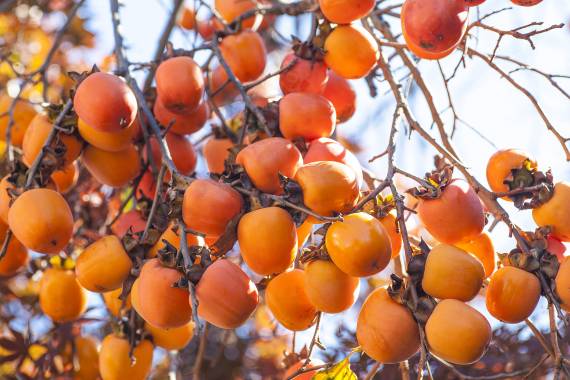ULO / XLO Controlled Atmosphere
ABSOGER has developed systems for ULO and XLO fruit preservation combining extremely low O2 and CO2 preservation rates.

Persimmons are the fruit of Diospyros kaki, a tree in the Ebenaceae family, native to China and cultivated in warm countries for its fruit.
The tree has become well established in Spain over the centuries, where it has given rise to the local variety “Rojo brillante”. The flesh is juicy,
slightly fibrous and sweet when ripe.
However, it has only become widely distributed since the advent of the oriental Persimmon, which is very popular with consumers.
For harvesting, different indicators are used.
Maturity indicators:
Quality indicators:
Before ripening, the persimmon has a bitter and astringent taste due to the presence of tannins. A 24-hour treatment under a controlled CO2 atmosphere eliminates the astringency of the persimmons without loss of firmness.
The controlled atmosphere delays ripening and preserves the firmness of the flesh, notably by maintaining low levels of CO2.
Persimmons can be stored in CA for more than 5 months under optimal storage conditions.
Storage conditions:
Persimmons are very sensitive to the action of ethylene. Exposure to more than 1 ppm results in a loss of firmness. Therefore, ethylene removal is the best solution for long-term storage.
Physiological disorders of persimmon:
Exposure to very low O2 levels during long periods of storage may prevent ripening of the persimmon and result in loss of flavour.
On the other hand, exposure to very high levels of CO2 over long periods of storage can lead to changes in fruit colour and aroma.
Temperature damage:
“Fuyu” and other varieties are sensitive to temperatures between 5 and 15 °C. Exposure to ethylene can aggravate the negative effects of low temperature sensitivity.
